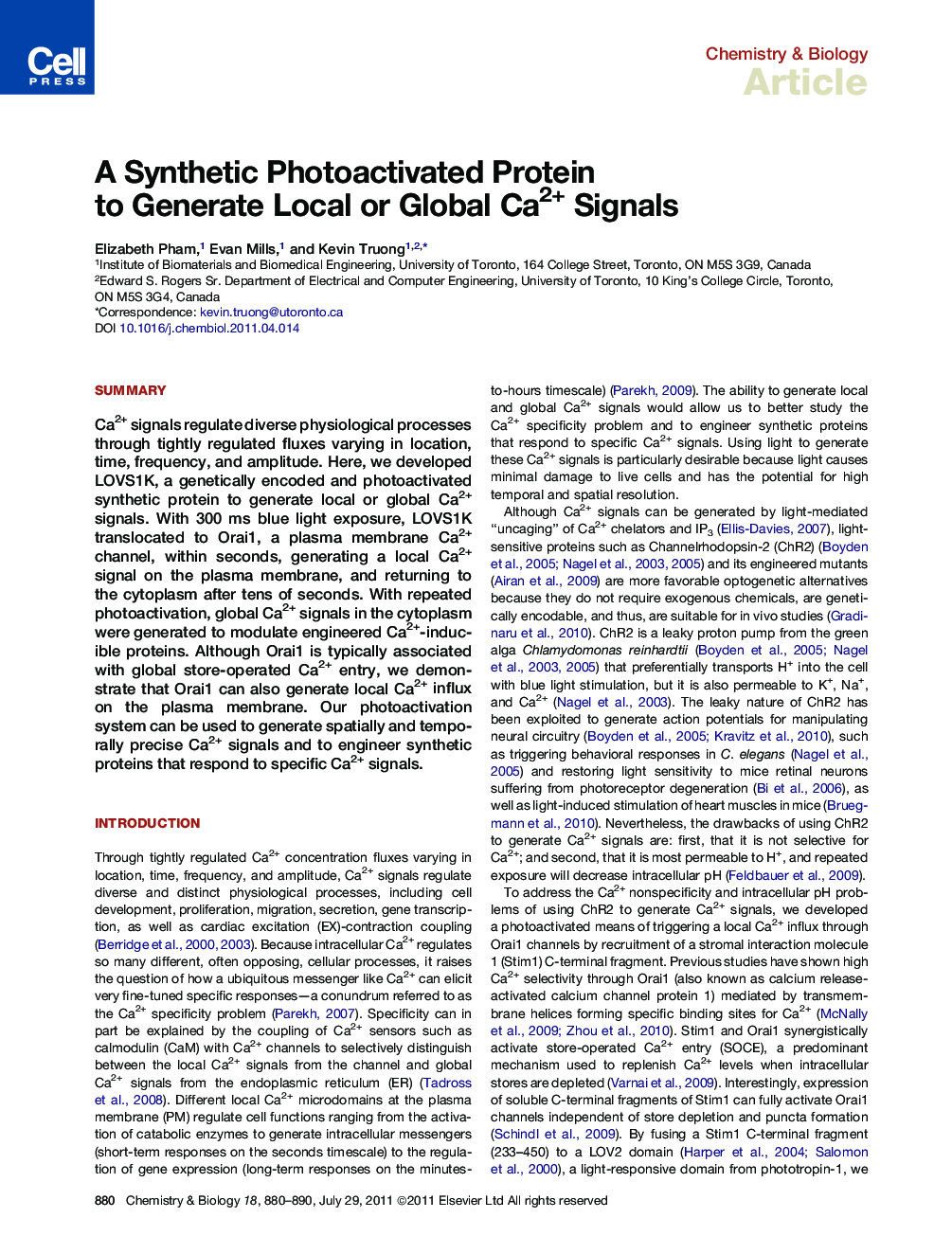| Article ID | Journal | Published Year | Pages | File Type |
|---|---|---|---|---|
| 1391939 | Chemistry & Biology | 2011 | 11 Pages |
SummaryCa2+ signals regulate diverse physiological processes through tightly regulated fluxes varying in location, time, frequency, and amplitude. Here, we developed LOVS1K, a genetically encoded and photoactivated synthetic protein to generate local or global Ca2+ signals. With 300 ms blue light exposure, LOVS1K translocated to Orai1, a plasma membrane Ca2+ channel, within seconds, generating a local Ca2+ signal on the plasma membrane, and returning to the cytoplasm after tens of seconds. With repeated photoactivation, global Ca2+ signals in the cytoplasm were generated to modulate engineered Ca2+-inducible proteins. Although Orai1 is typically associated with global store-operated Ca2+ entry, we demonstrate that Orai1 can also generate local Ca2+ influx on the plasma membrane. Our photoactivation system can be used to generate spatially and temporally precise Ca2+ signals and to engineer synthetic proteins that respond to specific Ca2+ signals.
Graphical AbstractFigure optionsDownload full-size imageDownload high-quality image (82 K)Download as PowerPoint slideHighlights► Developed LOVS1K, a genetically encoded and light-controllable synthetic protein ► Reversibly and specifically activates Orai1 Ca2+ channels ► Can generate both local or global Ca2+ signals with repeated photostimulation ► Used LOVS1K to modulate previously reported engineered Ca2+-inducible proteins
